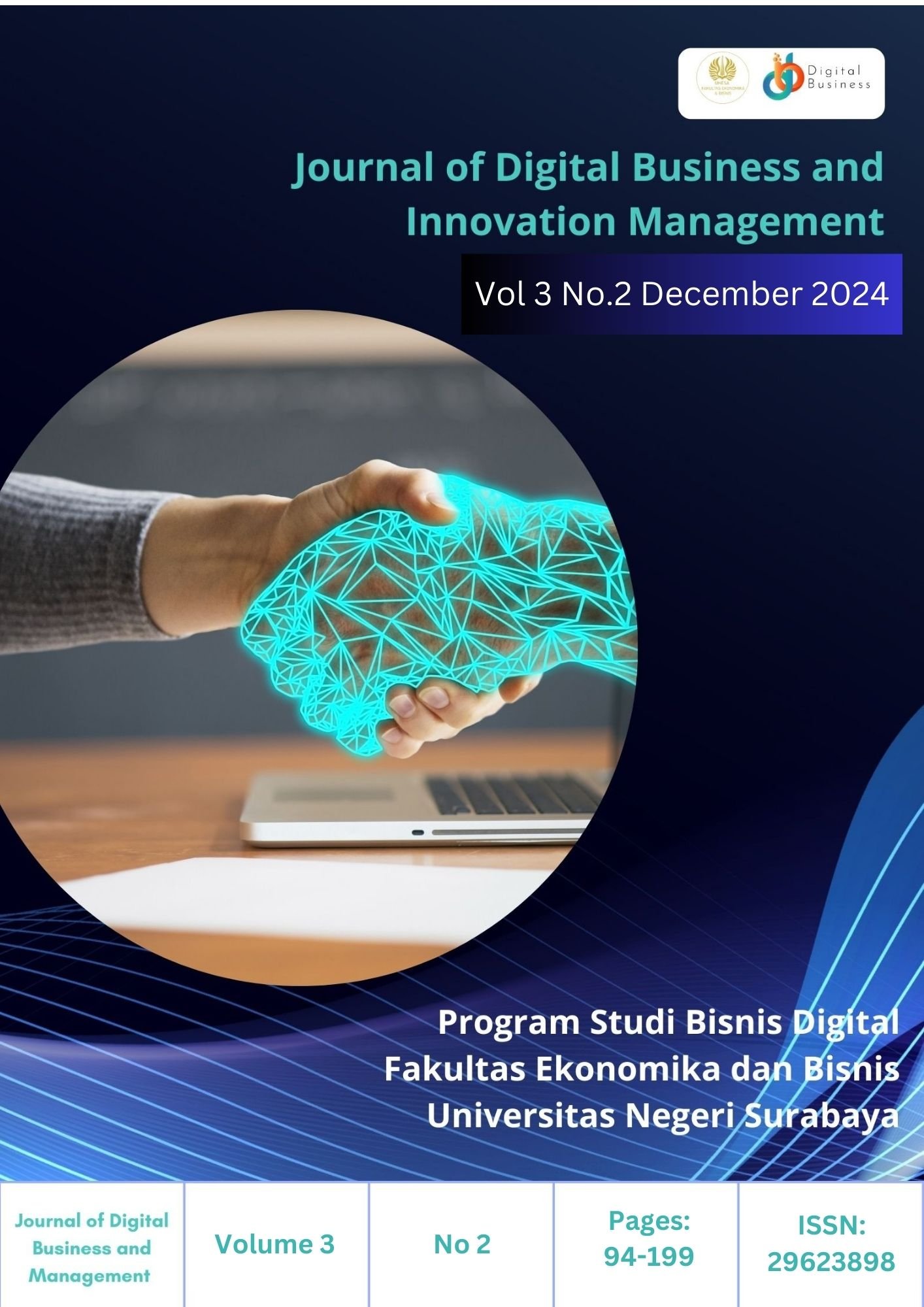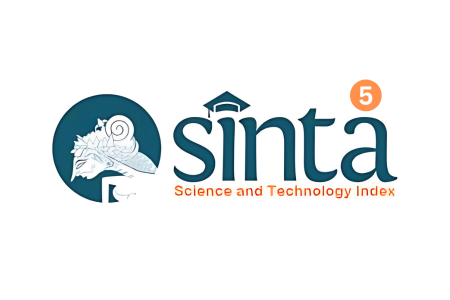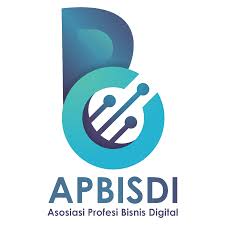Analyzing the Influence of Change Readiness on Change-Supportive Behavior in Health Information Systems
Keywords:
communication quality, trust, change readiness, changes supportive behaviour, health workersAbstract
The main objective of this study was to assess the effect of communication quality and trust on behavior change, which supports the information system of health workers in public health centers through the mediating variable of readiness for change. Data were collected from 341 health workers working in public health centers in Indonesia through enumerators as data collectors. The statistical procedure is divided into descriptive analysis using SPSS 25 and structural equation model using bootstraps using Smart PLS 3.2.9. Structural Equation Model analysis found several results. The results positively affect the quality of communication, trust, willingness to change, and support for behavior change. In addition, the study readiness to mediate changes in communication quality and trust in supporting behavior change. Therefore, this study shows that the quality of communication and trust is significantly associated with behavioral changes that support the mediation readiness for change in health workers in East Java, Indonesia.The main question of this study is to assess the effect of communication quality and trust on behavioral change that supports the information system of health workers at public health centers through the variable of mediation readiness for change. Research has been conducted to answer this research question. It has been empirically proven that the quality of communication and trust affects changes in supportive behavior with and without mediation. We believe that the quality of communication and trust due to the combined effect of readiness for change produces behavioral changes that favor more than the quality of communication and trust itself.
Downloads
References
Adil, M. S. (2016). Impact of change readiness on commitment to technological change, focal, and discretionary behaviors: Evidence from the manufacturing sector of Karachi. Journal of Organizational Change Management, 29(2), 222–241. https://doi.org/10.1108/JOCM-11-2014-0198
Ahmad, A. B., Straatmann, T., Mueller, K., & Liu, B. (2021). Employees’ Change Support in the Public Sector—A Multi-Time Field Study Examining the Formation of Intentions and Behaviors. Public Administration Review, 81(2), 231–243. https://doi.org/10.1111/puar.13275
Allwood, J. M., & Cullen, J. M. (2012). Sustainable Materials: With Both Eyes Open.
Bakari, H., Hunjra, A. I., & Niazi, G. S. K. (2017). How Does Authentic Leadership Influence Planned Organizational Change? The Role of Employees’ Perceptions: Integration of Theory of Planned Behavior and Lewin’s Three Step Model. Journal of Change Management, 17(2), 155–187. https://doi.org/10.1080/14697017.2017.1299370
Bayraktar, S., & Jiménez, A. (2020). Self-efficacy as a resource: a moderated mediation model of transformational leadership, extent of change and reactions to change. Journal of Organizational Change Management, 33(2), 301–317. https://doi.org/10.1108/JOCM-12-2018-0368
Carvalho, J. V., Rocha, Á., van de Wetering, R., & Abreu, A. (2019). A Maturity model for hospital information systems. Journal of Business Research, 94(December), 388–399. https://doi.org/10.1016/j.jbusres.2017.12.012
Faupel, S. (2020). Predicting managers’ championing behavior through subordinates’ change-related voice. Journal of Managerial Psychology, 35(5), 333–345. https://doi.org/10.1108/JMP-05-2019-0272
Faupel, S., & Süß, S. (2018). The Effect of Transformational Leadership on Employees During Organizational Change–An Empirical Analysis. Journal of Change Management, 19(3), 145–166. https://doi.org/10.1080/14697017.2018.1447006
Fugate, M., & Soenen, G. (2017). Predictors and processes related to employees’ change-related compliance and championing. Personnel Psychology, 71(1), 109–132. https://doi.org/10.1111/peps.12235
Gigliotti, R., Vardaman, J., Marshall, D. R., & Gonzalez, K. (2018). The Role of Perceived Organizational Support in Individual Change Readiness. Journal of Change Management, 19(2), 86–100. https://doi.org/10.1080/14697017.2018.1459784
Hair, Joe F., Risher, J. J., Sarstedt, M., & Ringle, C. M. (2019). When to use and how to report the results of PLS-SEM. European Business Review, 31(1), 2–24. https://doi.org/10.1108/EBR-11-2018-0203
Hair, Joseph F., Hult, G. T. M., Ringle, C. M., Sarstedt, M., & Thiele, K. O. (2017). Mirror, mirror on the wall: a comparative evaluation of composite-based structural equation modeling methods. Journal of the Academy of Marketing Science, 45(5), 616–632. https://doi.org/10.1007/s11747-017-0517-x
Hair Jr., J. F., Anderson, R. E., Babin, B. J., & Black, W. C. (2019). Multivariate Data Analysis. In Book (Eight). Cengage. www.cengage.com/highered
Hayes, A. F. (2022). Introduction to Mediation, Moderation, and Conditional Process Analysis. A Regression- Based Approach (T. D. Little (ed.); Third). The Guilford Press.
Herscovitch, L., & Meyer, J. P. (2002). Commitment to organizational change: Extension of a three- component model. Journal of Applied Psychology, 87(3), 474–487. https://doi.org/10.1037/0021- 9010.87.3.474
Holt, D. T., Armenakis, A. A., Feild, H. S., & Harris, S. G. (2007). Readiness for Organizational Change : The Systematic Development of a Scale. The Journal of Applied Behavioral Science, 43(2), 232–255. https://doi.org/10.1177/0021886306295295
Holt, D. T., Armenakis, A. A., Harris, S. G., & Feild, H. S. (2007). Toward a Comprehensive Definition of Readiness for Change: A Review of Research and Instrumentation. Research in Organizational Change and Development, 16, 289–336. https://doi.org/10.1108/s0897-3016_2014_0000022015
Islam, M. N., Furuoka, F., & Idris, A. (2020). Transformational leadership and employee championing behavior during organizational change: the mediating effect of work engagement. South Asian Journal of Business Studies. https://doi.org/10.1108/SAJBS-01-2020-0016
Islam, M. N., Furuoka, F., & Idris, A. (2021). Mapping the relationship between transformational leadership, trust in leadership and employee championing behavior during organizational change. Asia Pacific Management Review, 26(2), 95–102. https://doi.org/10.1016/j.apmrv.2020.09.002
Jin, J., Zhang, T., & Yan, X. (2022). Why do users continually seek knowledge in online Q&A communities? An empirical investigation. Information Discovery and Delivery, April 2021. https://doi.org/10.1108/IDD-04-2021-0042
Latan, H., & Hair, J. F. J. (2023). Partial Least Squares path Modeling. Basic Concepts, Methodological Issues and Applications (R. Noonan (ed.); second). Springer. https://doi.org/10.1007/978-3-031-37772-3_8 Maruthappu, M., Hasan, A., & Zeltner, T. (2015). Enablers and barriers in implementing integrated care.
Health Systems and Reform, 1(4), 250–256. https://doi.org/10.1080/23288604.2015.1077301
Men, L. R., Yue, C. A., & Liu, Y. (2020). “Vision, passion, and care:” The impact of charismatic executive leadership communication on employee trust and support for organizational change. Public Relations Review, 46(3). https://doi.org/10.1016/j.pubrev.2020.101927
Neill, M. S., Men, L. R., & Yue, C. A. (2019). How communication climate and organizational identification impact change. Corporate Communications, 25(2), 281–298. https://doi.org/10.1108/CCIJ-06-2019-0063
Neuman, L. W. (2013). Basics of Social Research Qualitative and Quantitative Approaches (2nd editio). Pearson.
Rafferty, A. E., & Minbashian, A. (2019). Cognitive beliefs and positive emotions about change: Relationships with employee change readiness and change-supportive behaviors. Human Relations, 72(10), 1623–1650. https://doi.org/10.1177/0018726718809154
Sarstedt, M., Hair, J. F., Ringle, C. M., Thiele, K. O., & Gudergan, S. P. (2016). Estimation issues with PLS and CBSEM: Where the bias lies! Journal of Business Research, 69(10), 3998–4010. https://doi.org/10.1016/j.jbusres.2016.06.007
Sarstedt, M., & Mooi, E. (2019). A Concise Guide to Market Research The Process, Data, and Methods Using IBM SPSS Statistics (Third). Springer, Berlin, Heidelberg. https://doi.org/10.1007/978-3-662-56707- 4
Sharma, N., Herrnschmidt, J., Claes, V., Bachnick, S., De Geest, S., & Simon, M. (2018). Organizational readiness for implementing change in acute care hospitals: An analysis of a cross-sectional, multicentre study. Journal of Advanced Nursing, 74(12), 2798–2808. https://doi.org/10.1111/jan.13801
Soumyaja, D., Kamalanabhan, T. J., & Bhattacharyya, S. (2018). Antecedents of employee readiness for change in the IT sector and the manufacturing sector: A comparative study. International Journal of Human Resources Development and Management, 18(3–4), 237–256. https://doi.org/10.1504/IJHRDM.2018.093444
Thakur, R. R., & Srivastava, S. (2018). From resistance to readiness: the role of mediating variables. Journal of Organizational Change Management, 31(1), 230–247. https://doi.org/10.1108/JOCM-06-2017-0237
Vaishnavi, V., & Suresh, M. (2020). Assessment of readiness level for implementing lean six sigma in healthcare organization using fuzzy logic approach. International Journal of Lean Six Sigma. https://doi.org/10.1108/IJLSS-07-2019-0081

Downloads
Published
How to Cite
Issue
Section
 Abstract views: 107
,
Abstract views: 107
, PDF Downloads: 71
PDF Downloads: 71






